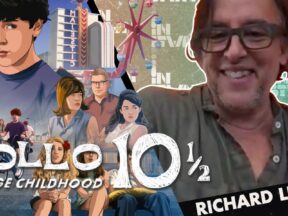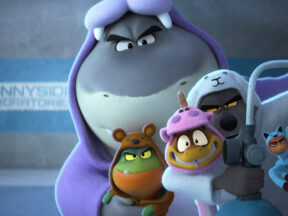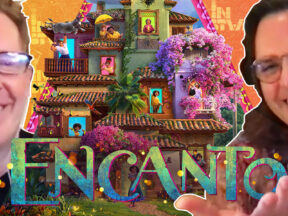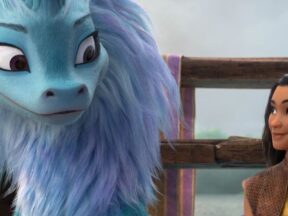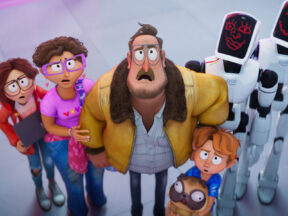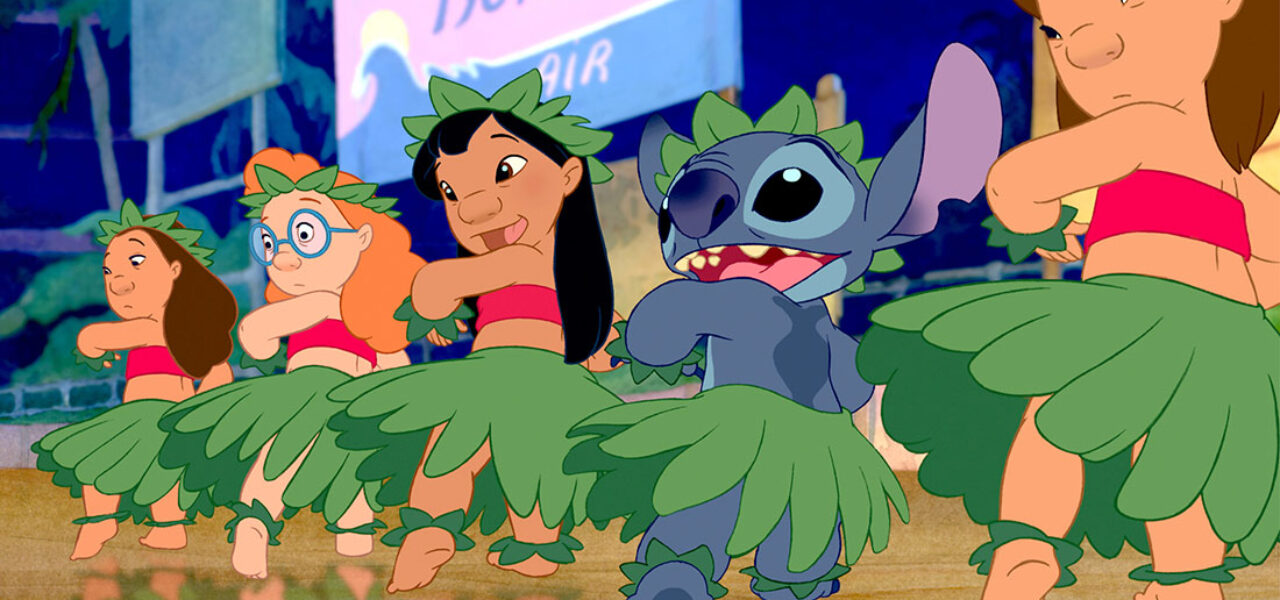
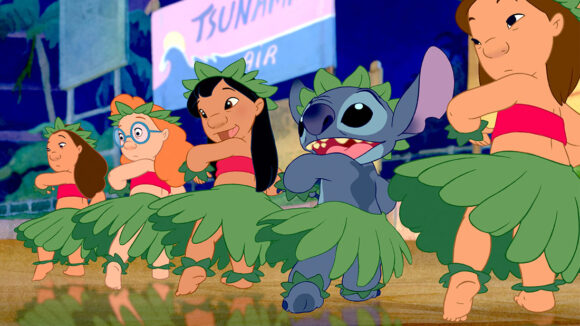
‘Lilo & Stitch’ At 20: Directors Chris Sanders And Dean DeBlois Reunite (Video Interview)
Lilo & Stitch hit movie theaters 20 years ago this week with a mighty, extraterrestrial growl. Although the budget was relatively small compared to other Disney animated features of the time, it was a roaring success at the box office and the Stitch character remains synonymous with the Disney brand to this day, filling shelves in stores around the world.
INBTWN Animation, the official online event partner of Cartoon Brew, caught up with the film’s two directors, Chris Sanders and Dean DeBlois, as they reminisced over the creation, development, production, and enduring legacy that the film has garnered.
Watch the conversation here:
Origins of an Alien
All the way back in the 1980s, Chris Sanders first created the original concept of the Stitch character. DeBlois explains that the initial idea was, “a creature with unknown origin that lived in some great northern forest and was ostracized by the forest community.”
When the duo later pitched the idea to Thomas Schumacher, then-president of feature animation at Disney, he gave them their first official note, explaining that “the forest community is already alien to us… what about taking this character and placing him in a world with humans.”
DeBlois, eventually assigned as the second director on the film, recalls, “The first thing Chris said to me was, ‘I’m really curious about whether or not we can pull off a story where we begin with the villain and we make him become a hero.’” Already they were thinking about challenging the established good-guy-bad-guy norms at Disney Animation. Both had just come off working in the story department for Mulan and were looking for a change of pace.
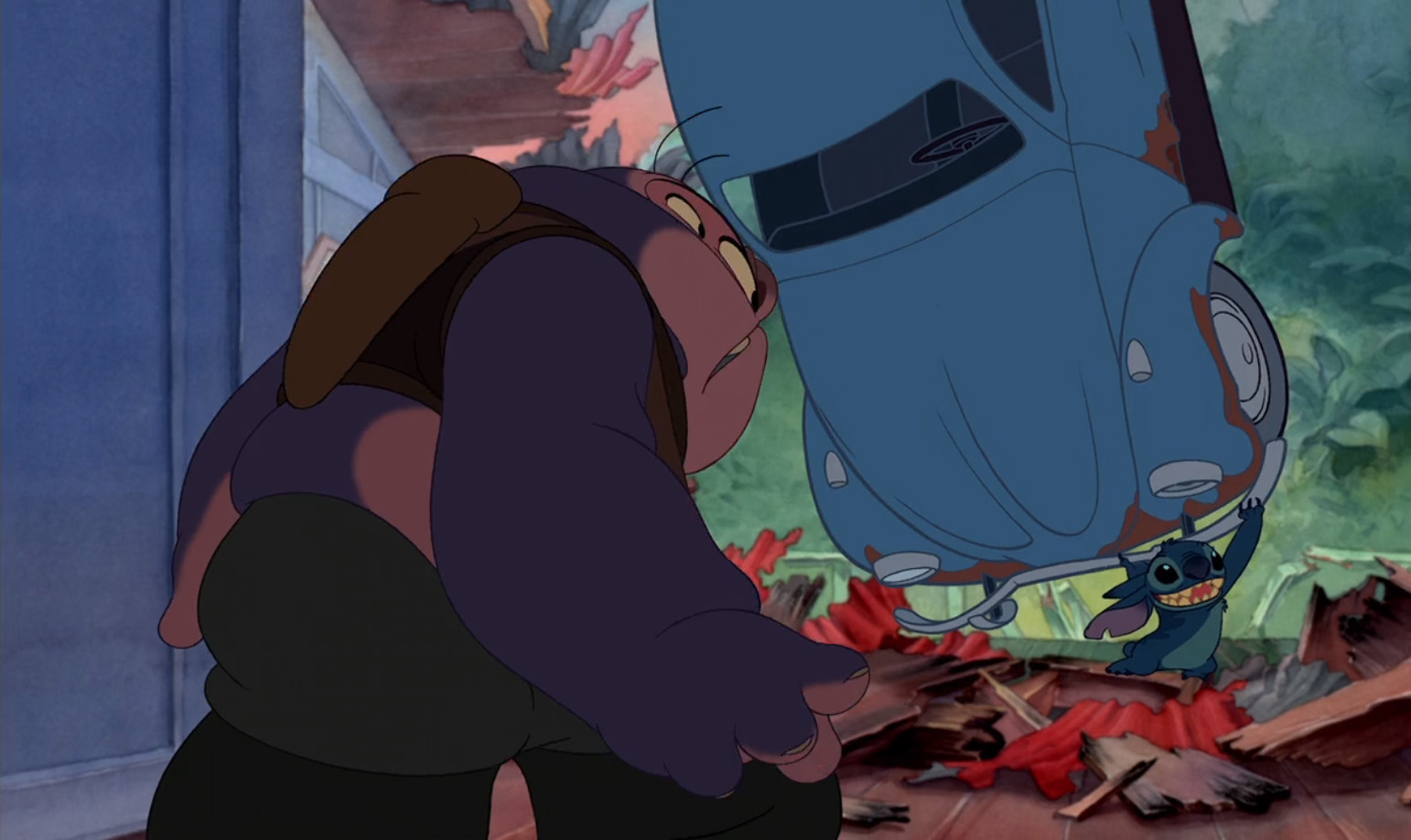
Downsizing
“Mulan involved really large-scale crowds of people, armies, and cities and stuff like that. And I had a great desire to do a smaller story,” says Sanders. “It’s like something a little more intimate and a little bit easier to deal with logistically… I was thinking, well, maybe I could set this in rural America somewhere.”
But, as Sanders continues, “I had been to Hawaii not that long before on a trip and I had a roadmap of Hawaii up on my wall. I was just staring at it, [and] slowly the connection was being made… maybe we could put it in Hawaii.” He initially hesitated thinking it might be too much fun, but eventually gave in and dove headfirst into the concept.
When they visited Hawaii, the core values of what they’d been developing came to life through Hawaiian culture.
DeBlois recalls, “Once you veer off the tourist trappings and paths, you find these beautiful little towns and this beautiful sense of larger family where everyone has a cousin, an aunt, an uncle. And the real Hawaii is so enchanting and weirdly romantic in kind of a grounded, living day-to-day way.”
In planning the story, they made sure to pay a great deal of respect to local customs and ensured they got all aspects of the culture correct. Sanders explains, “I’ve never seen a place where the continuity of culture from person to person is so well kept. And it’s one of the first things that Dean and I realized… If we were to embark on this journey, we had to be incredibly open and talk to people and listen and engage [with] as many people as we could that knew what they were doing.”

Lessons Learned
By the time their pitch got the greenlight, they already had a blueprint of how they wanted their production to run having just come from Mulan. As DeBlois remembers it, “Mulan was actually a pretty miserable experience.”
Both Mulan, and later Lilo & Stich, were among a small number of films animated at Walt Disney Animation Florida, a short-lived studio on the backlot of the Disney-MGM Studios theme park which was famous for overhead breezeways and large walls of windows that allowed tourists to see the animation process in action.
“In the end it was five years [on Mulan], but the Florida part of that… everything was [running] behind and I just remember those late nights,” says DeBlois. “[The studio] was butted up against a theme park so you’d hear the roller coasters and the people screaming and laughing and it’d be 10:30 at night, and we’re still storyboarding, and there’s somebody pushing a vacuum cleaner around in the hallways.”
To avoid a similar situation with Lilo & Stitch, they made it a goal that “no one is going to get a divorce because of this movie. No one’s gonna get sick because of this movie. No one’s gonna like become estranged from their family and friends because of this movie,” DeBlois recalls.
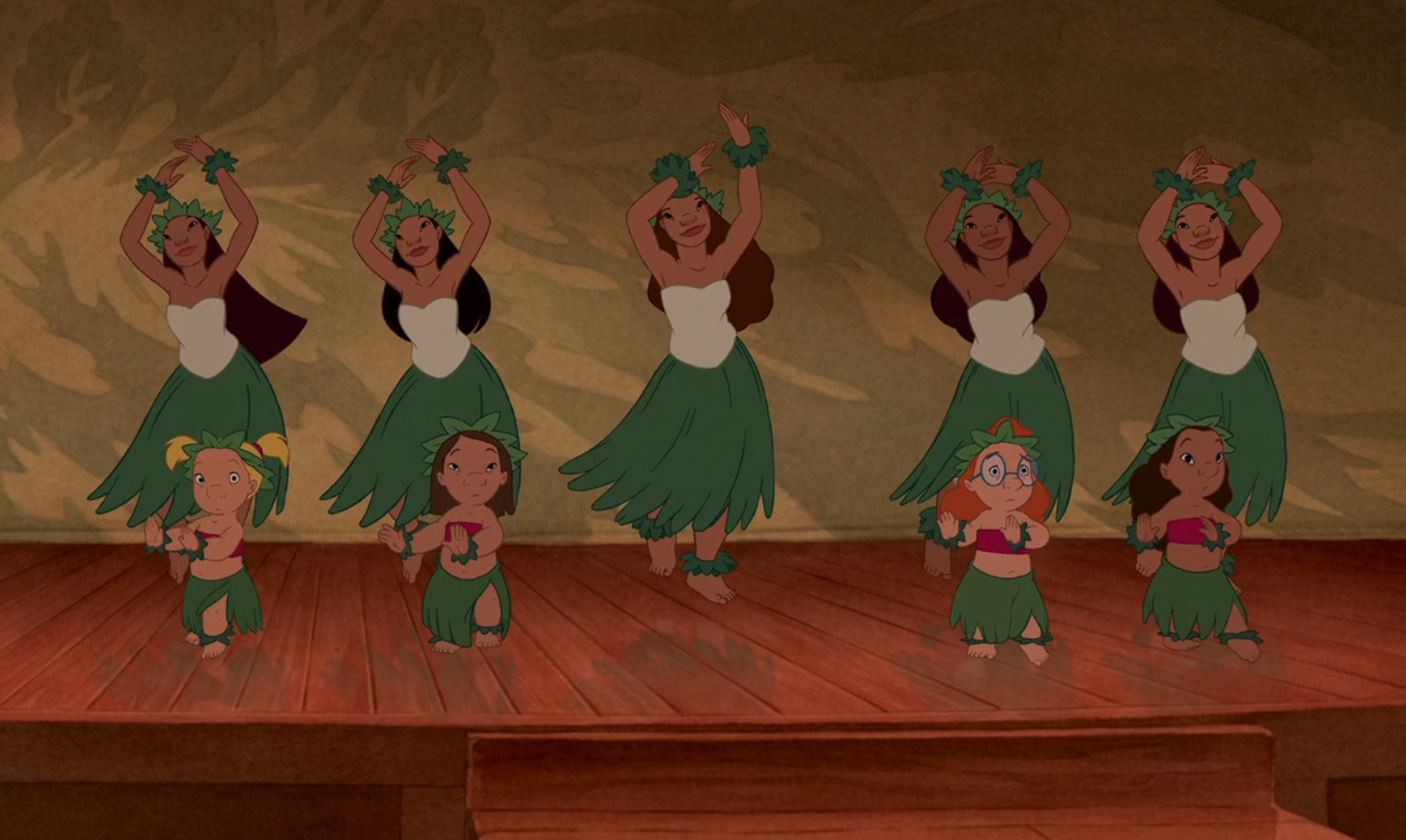
Better Budgeting
To that end, the directing duo decided to cut corners in ways that wouldn’t be obvious on screen. As DeBlois recalls, “We had to reduce line mileage you know; delete pockets off jean shorts or prints off t-shirts or reduce complexity wherever we had to in order to get there. We couldn’t afford shadows, so we put our characters under the shade of trees and things like that throughout the movie.”
Ultimately, scaling down the production resulted in “an entire crew of people – and I know about this because of Facebook and social media – [who say] that was their favorite moviemaking experience,” he says.
Sanders claims he never actually knew exactly how much the budget for the film was, but instead a producer would call them into the office and explain what sequence might push them over said budget.
“Those kinds of parameters are not a problem,” explains Sanders. “They actually, in some ways, help.”
As an example, he recalls “a scene in which Lilo was coming onto the shoreline. It was the introduction of her character, and it was the first time you were gonna see her. We proposed that she would come in on this wave and run down the beach past people doing all these different things. [Eventually though,] instead of showing all that animation, she comes onto the beach and you see one really quick, wide shot where all the characters are actually frozen. They’re not moving save for like one character that’s throwing a Frisbee, and then [we] immediately cut really close to Lilo and she’s running through lots of legs that are, again, not moving and you don’t notice anything weird.”
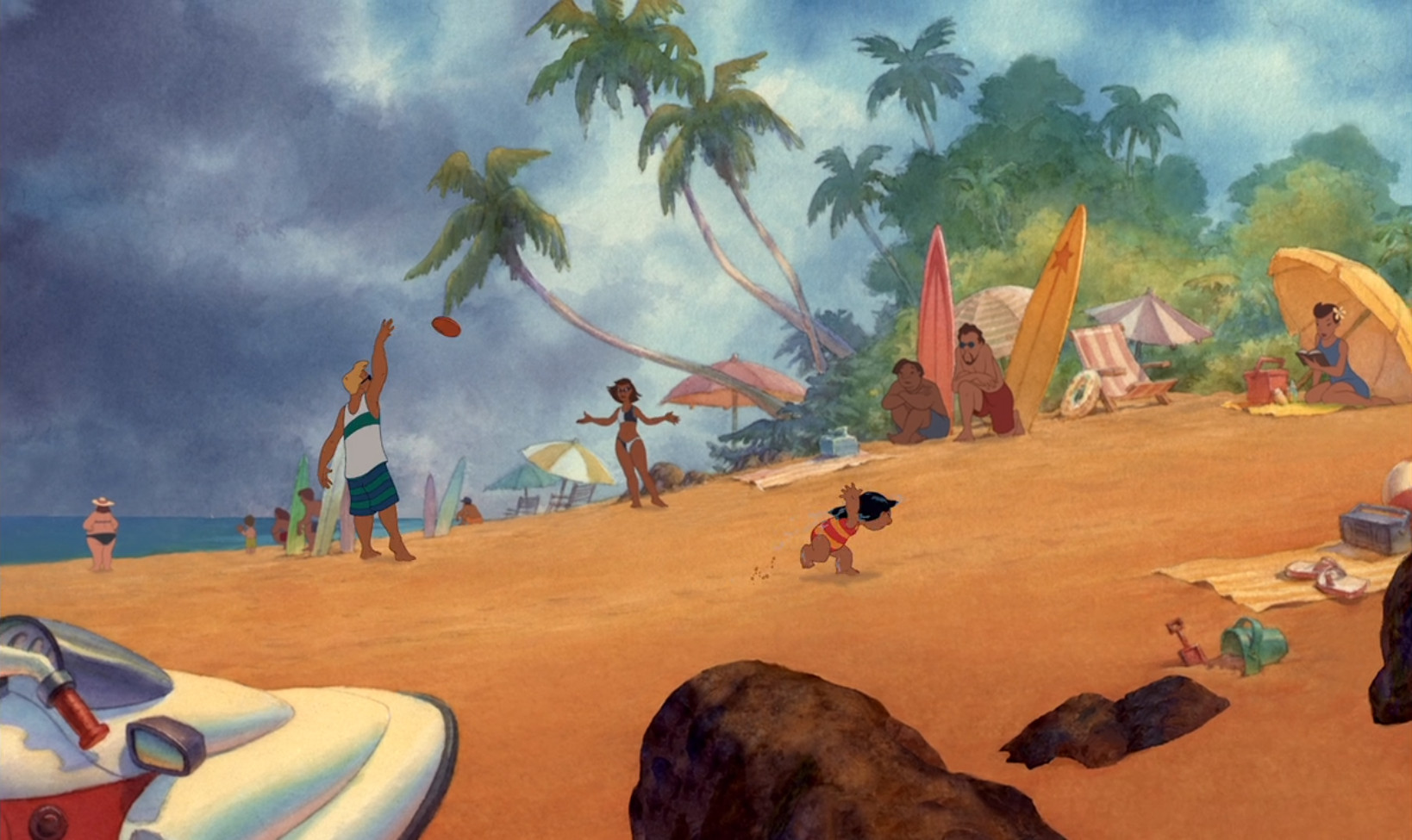
Cutting Room Floor
When asked if they would go back and change anything, the two joke about several scenes that regrettably had to be cut or changed for the movie.
In one scene that was chopped, Sanders remembers, “All these little girls come in to do the dialogue for Lilo’s friends. At one point… one of the girls says, ‘I bet you have rabies. Do you have rabies?’ And then another little girl, because she was so young… said, ‘If you have rabies, the dog catcher is gonna have to cut your head off.’ We had to take out the words, ‘Cut your head off.’”
Another change they chuckle about was a sequence in which Stitch put his hand in a blender. In the end, they happily changed that to the alien simply removing the lid from the blender. Sanders also recalls that they had to change a scene in which Lilo comes out of the tumble dryer, instead covering the action with a pizza box for the international release, which is the version currently available on Disney+.
Legacy
Summing up the experience of making Lilo & Stitch, DeBlois says, “We talk about it with such clear memories and with such fondness because the entire experience of making that movie was [one of] working with a small crew that were really excited and passionate about what they’re doing. But we would also hang out on the weekends, go kayaking, go down to the Florida Keys, and we’d go to the beaches and just travel around… The whole thing was like a big adventure… but it was mostly just fun and freedom.”
“That found its way into the movie,” he concludes. “The movie feels like a big sort of, I don’t know… like spending time with family. It just has that kind of warmth to it.”

.png)
